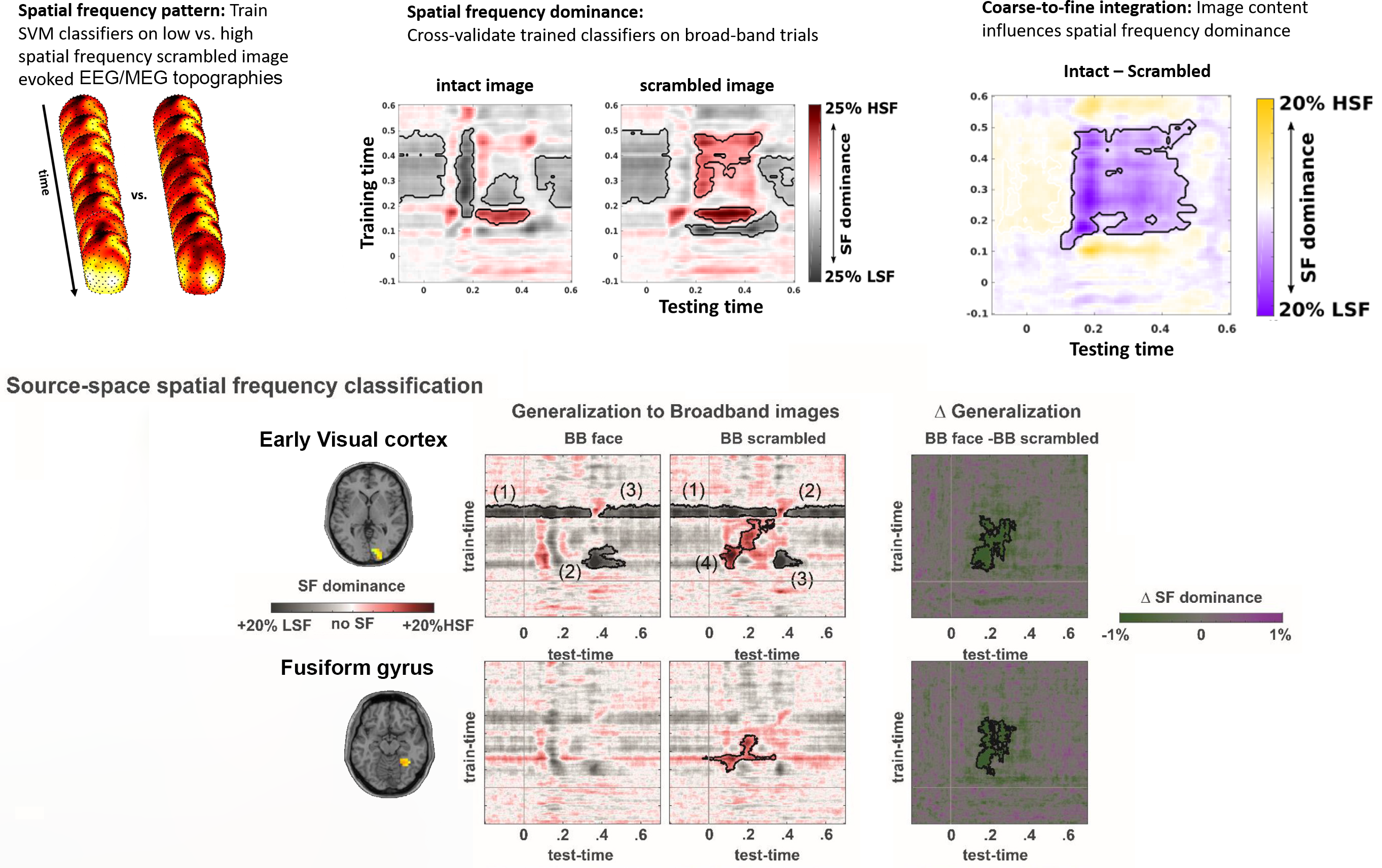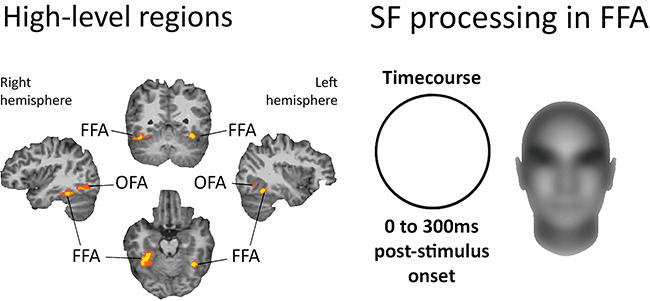Spatial Frequency Integration
Spatial frequencies (SF) refer to the different spatial resolutions composing an image, with low SF depicting the coarse structure of the image and higher SF representing its finest details. Natural images exhibit luminance variations aligned across a broad SF spectrum. Coarse-to-fine theories of vision propose that the coarse information carried by the low spatial frequencies (LSF) of visual input guides the integration of finer, high spatial frequency (HSF) detail.

Using functional resonance imaging (fMRI), we disrupted the processing of the coarse and fine content of full-spectrum human face stimuli via backward masking of selective SF ranges (LSFs: < 1.75cpd and HSFs: > 1.75cpd) at specific times (50, 83, 100 or 150 ms). In line with coarse-to-fine proposals, we found that
(1) the selective masking of stimulus LSF disrupted V1 activity in the earliest time window, and progressively decreased in influence, while
(2) an opposite trend was observed for the masking of stimulus’ HSF.
This pattern of activity was found in V1, as well as in ventral (i.e. the Fusiform Face area, FFA), dorsal, and orbitofrontal regions.

We used multivariate decoding of EEG and MEG signals to separate the respective contribution of LSF and HSF to the neural response evoked by broad-band images. With both techniques, we found reduced HSF contribution when LSF was informative towards image content, indicating that coarse information does guide the processing of fine detail, in line with coarse-to-fine theories.
The reduction in HSF representational dominance was found in both early and higher-level visual areas and correlated with a reduction of gamma-band power in early visual cortex.
Our results indicate that the cross spatial frequency information redundancy that can be found in all natural images might be a driving factor in the efficient integration of fine image details.
Core aspects of face processing are primarily driven by the low spatial frequencies (SF) of the visual image. The processing of low SF information accounts for the early neurophysiological dissociation (N170) between face and object visual processing.
Low SF conveys the most essential cues for holistic/interactive face processing.

